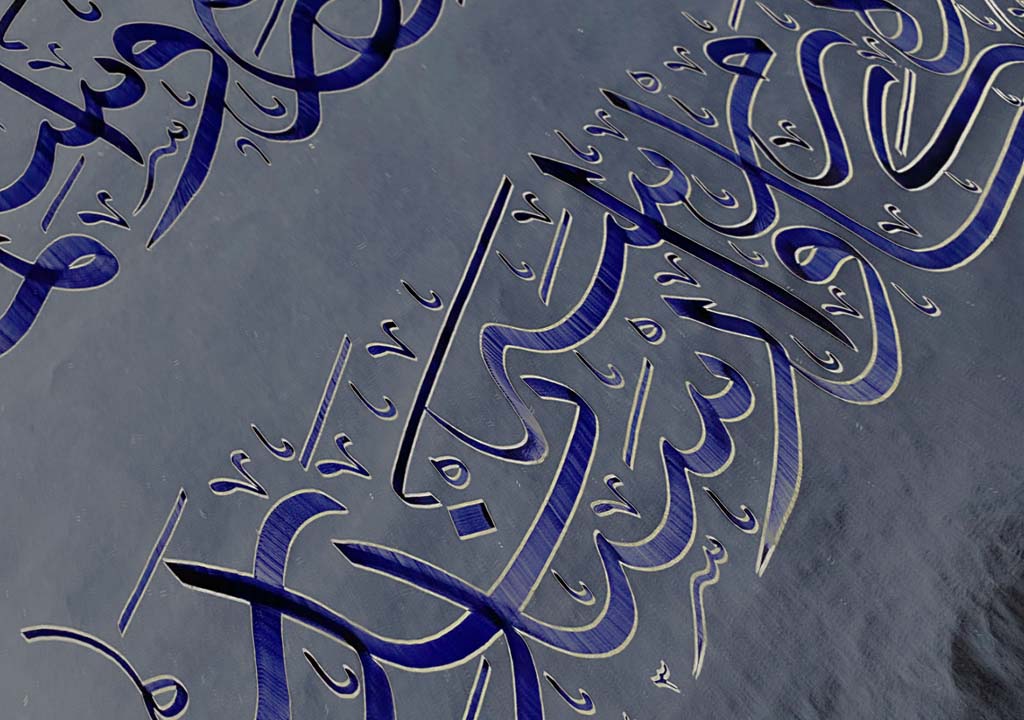Arabic Calligraphy in actual terms is called “khat”. In Arabic the meaning of khat is line. However khat also refers to piece of writing.
Some arts have remained as art. Some of them have a duty in our life. Calligraphy is one that has a duty because it has been around for ten centuries for our nation. It first appeared as a reading tool, but has developed over the century as an art other than the plain form. The primary idea of calligraphy as an emerging art was to write and decorate the book of Islam, The Quran, in the most beautiful way.
Let’s start with the most repeated word in the art of calligraphy, and the most repeated in Islam. You see a Basmala, “bismillahirrahmanirrahim” , written with the thuluth script by one of the greatest masters Halim Efendi:
Regarding Ottoman calligraphy, the Turks chose Arabic letters as a means of reading and writing after their acceptance of Islam, especially artistic writing after the conquest of Istanbul. This artistic form accelerated from the 15th century and became an important art branch in the era when the Turks were included in the Islamic world and became an important art branch in the era when the Turks were included in the Islamic world. Calligraphy and gold leaf art emerged during this time with the aim of writing and decorating the Quran in the most beautiful way. It was not like this at first This Form of Calligraphy has been developed for a very long time. In the 2nd year of Calligraphy and gold leaf art came into existence due to the use of gold at one point, but as we understand it, it emerged with its aesthetic dimension in the Arab world in the 11th century and the 12th century.
There was a genius calligrapher named Yakut, who lived in Baghdad in the 1200s before the conquest of Istanbul, Some sources also say that he was a Turk from Amasya.
In some sources, it is also said that he was a Turk from Amasya, who lived in Baghdad in the 1200s before the conquest of Istanbul, a genius calligrapher named Yakut el Mustastimi.
Yakut brought the previously written scripts to the most perfect level in that century and everyone in the whole Islamic world took him as a guide. However, when Sheikh Hamdullah came to Istanbul at the end of the 15th century and the beginning of the 16th century, Bayezid II was on the throne. A conversion between Bazezid and Sheikh Hamdullah as follows: Bayezid says, “Master, can you give a new style in calligraphy after Yakut”. In response, Sheikh: “Yakut has done the best that can be done, there is no need for it,” gives a refusal. But Sultan Bayezid insists: “Let me give you the Yakut scripts that are in the treasure. Look at them and reveal a new style.” Sheikh Hamdullah takes these samples and takes them to Alemdağı. And with the help of Hızır (in such sources), He spent 40 days and got along with these writings. He reveals a style of writing that is not opposed to these writings, but also shows his separation. There are 6 types of scripts most commonly used in that period: thuluth nesih, reyhan tawki and rikaa make changes in all of them, the most obvious is in the line of nesih. While everyone is writing in the Yakut way, the Yakut way is forgotten in 15-16 years and the dialect style of Sheikh Hamdullah is accepted.

